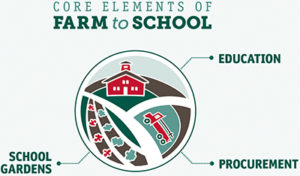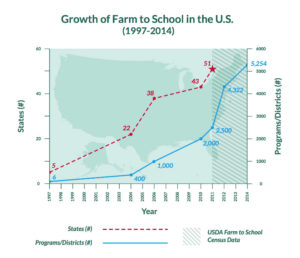The Eagle’s orchard at R.T. Barrera has been partially funded by donations and most recently, as part of a Starr County Farm to School grant. The National Farm to School effort sprouted in 1996-1997 from the desire to support community-based food systems, strengthen family farms, and improve student health by reducing childhood obesity. In 2004, the National Farm to School Program was officially authorized, and included 400 programs in 22 states. The Farm to School Network was founded in 2007. The National Farm to School network’s first

decade of efforts focused on developing a strong network of partnerships across sectors, building awareness about farm to school and increasing activities at the state and regional levels through training, capacity building, and policy advocacy.
Farm to school enriches the connection communities have with fresh, healthy food and local food producers by changing food purchasing and education practices at schools and early care and education sites. Like at R.T Barrera, students gain access to healthy, local foods, as well as education opportunities such as school gardens, cooking lessons and farm field trips. Farm to school empowers children and their families to make informed food choices while strengthening the local economy and contributing to vibrant communities
 Farm to school implementation differs by location but always includes one or more of the following:
Farm to school implementation differs by location but always includes one or more of the following:
– Procurement: local foods are purchased, promoted and served in the cafeteria or as a snack or taste-test.
– School Gardens: students engage in hands-on learning through gardening; and
– Education: students participate in education activities to agriculture, food, health or nutrition
Today, there are 42,587 schools involved, 42% of US schools, 23.6 million students engaged, $789m spent on local food, 46 states with supportive policies, and 20,000+ nfsn members. To learn more, you can go here.